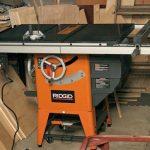When it concerns woodworking tools, you require adaptability– the capability to make a range of cuts with one tool. That’s where a table saw can be found. A table saw is terrific for making joint cuts, groove cuts, straight cuts, and more. You can take on a lot of various tasks with a trusted table saw.
Types Of Table Saws
Portable Table Saw— Portable or “task website” table saws are ideal for when you require to take your table saw to the task website. They’re smaller sized and more light-weight, making them much easier to carry. They can rest on a workbench or a stand. With the smaller sized size, nevertheless, comes less torque. Portable table saws have a direct-drive motor, which connects straight to the blade, moving all of the motor’s power to the blade. The expense is lower than that of a specialist’s or fixed table saw. When you require to do woodworking work outside the store, a portable table saw is a terrific fit.
Specialist’s Table Saw— For more strong jobs, a professional’s table saw is next in line. Weighing in between 200– 300 pounds, they’re still fairly light-weight and can be portable. A specialist’s table saw has a belt-drive motor, where a belt transfers power from the motor to the blade. While more pricey than a portable table saw, a professional table saw is still economical for your house store or for the enthusiast. The saw works well for tasks like trim work, fundamental furnishings making, and kitchen cabinetry.
Fixed Table Saw— Stationary or cabinet saws are implied for the heaviest of woodworking jobs. These huge table saws can quickly cut through wood without putting much wear and tear on the saw positioning and blade. The effective motor (more than doubling in horsepower when compared to a specialist’s saw) is framed in a cabinet, which makes the saw quieter when it’s running. Fixed table saws are indicated to remain in one location and are chosen by expert woodworkers for their store.
Specs to Keep In Mind
With every table saw there are some functions and requirements to bear in mind. Here are a few of the essentials:
Saw Blades— Most table saws feature a 10 ″ blade. Nevertheless, there are various blades for various usages. Rip blades, crosscut blades, and mix blades are simply a couple of you can contribute to your table saw.
Rip Fence— The bar that works as a guide for your workpiece as it moves past the blade.
Miter Gauge— Used for precise and fast miter cuts and crosscuts.
Bevel System— It enables you to tilt the blade to make bevel cuts on your workpiece.

